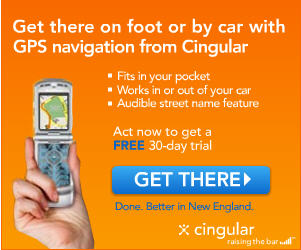It’s a holiday weekend and, not surprisingly, this Carnival of Marketing installment has a little less to chew on. But there’s good stuff nonetheless. It’s been a pleasure hosting it these past two weeks, and I look forward to doing it again. If you can’t get your fill of actionable marketing news and advice from this batch, check out the leftovers — last week’s Carnival!
I’m starting off with a very personal recommendation, written in the spirit of gratitude that this holiday week engenders.
I grew up in a small town in the wooded, remote Upper Peninsula of Michigan (the “U.P.”), at a time when we were so cut off from the rest of the state — and the country — that many U.S. maps didn’t bother to include us. We were depicted as part of Canada. As a boy I was a bit of a runt, and not interested in sports or hunting. Instead I gravitated toward books, and they became beloved teachers and companions.
But the U.P. was a poor part of the country. Books didn’t figure prominently in a typical household. Luckily I could still feed my passion, thanks to my town’s Carnegie Public Library. Astonishingly, Andrew Carnegie’s philanthropy reached deep into the mining and logging outposts of the Northwoods.
I am convinced that Mr. Carnegie’s library saved my life (if only by keeping me indoors, lest I get the tar beaten out of me). So when I was driving through my hometown on Friday, midway through a nine-hour drive to my Milwaukee home from a family celebration in Lower Michigan, there was only one boyhood landmark I couldn’t drive by without taking pause.
I pulled the car in front of the building wistfully. Long ago sold to private owners, to God knows what purpose, it has been usurped by a newer library down on Main Street. But this classically designed stone landmark still looks the same, regal and welcoming. Perhaps what’s keeping it looking so good is the psychic force of fond memories, from hopeless dorks like me, now well into middle age.
Which leads me to my first Carnival entry.
In her debut to the blog 800-CEO-Read, Rebecca Schlei recommends a business biography of this great man by David Nasaw. You’ll find it in her The Other Side entry:
[The book] Andrew Carnegie is a cross-genre event, much like the man himself. While Carnegie’s lifelong philanthropy is a major thread in the story, Nasaw also focuses on his early scoot up the corporate ladder and aggressive business practices. An advocate for disarmament, a champion of free and public libraries, a writer and a visionary, Carnegie towers — in spite of his small build — as one of the most fascinating characters in U.S. history.
Hey! He was even short like me. I like this guy more all the time.
Is trust scalable through social networking sites? Or is business guru Charles Handy right when he says that trust is too personal to be replicated through bits and bytes? Charles H. Green examines that question, along with presenting some interesting definitions of what trust is as it pertains to sales and marketing, in Charles Handy vs. Web 2.0 posted at Trust Matters.
You don’t have to be a hardcore sports fan like me [wink] to enjoy End It Like Beckham posted by Starling David Hunter at The Business of America is Business. Major League Soccer (MLS) is changing a rule about who gets to play on a team.
Nicknamed the Beckham Rule, because it would allow a team to hire such a superstar (without giving away its ability to afford to hire other players to join him on the field), this change is ultimately about getting the sport in front of more fans, and on more television sets. But will it work? Mr. Hunter is skeptical.
When it comes to feature / benefit selling, which should come first in today’s time-pressed sales environment: the features or the benefits? Jim Logan explores this in The Role of Features and Functionality posted at his company’s blog.
Using an interesting metaphor, Barry Welford suggests in Walled Gardens – The Walls Keep Tumbling Down that although some companies have adopted the Walled Garden approach to their mobile technologies and services, others are dropping this closed approach when they see the advantages of more open system. It’s posted at StayGoLinks.
Customer service is more important today than ever. So Juuso Hietalahti poses the question Is Bad Support Better Than No Support at All?, as it relates to the development of interactive games. You’ll find it on his GameProducer.Net.
Mike Murray presents The Decline of Hardball posted at Episteme: Belief. Knowledge. Wisdom. He’s referring to a book on how women can learn to compete in business using zero-sum tactics. Its revised edition recognizes that the rules of business (and Mike suggests marketing as well) have changed quite a bit since the book first came out.
Using blogging as an example, he explains, “Rather than learning to play hardball, we all need to spend more time learning to play softball – to build relationships and create connections that allow us to collaborate rather than to compete. The benefits of a relationship-based, collaborative strategy have never been more clear to me as they have been since I have started blogging … I am developing friendships with those out there who, in an age of hardball would have likely been viewed as competition.” It’s a thoughtful piece by an interesting writer.
Last but not least, Priya Jestin offers up Customer Satisfaction Online: Simple & Tough (as in difficult) posted at CRM Lowdown.
